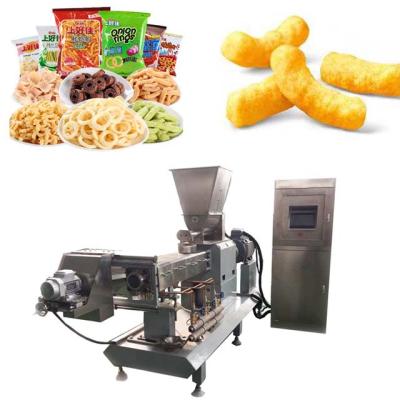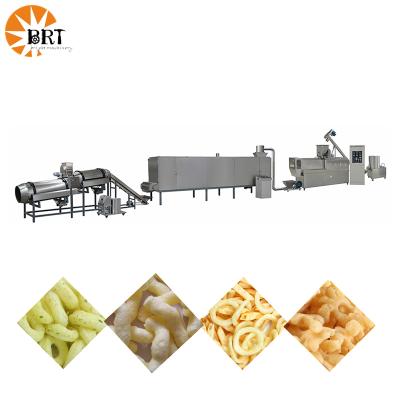How to Choose Suitable Fish Feed and Fish Feed Machine
How to Choose Suitable Fish Feed and Fish Feed Machine
1. Protein is the main nutritional index of fish compound feed
The protein content in the feed is one of the criteria to measure the nutritional level of the feed, but it does not mean that the higher the protein content, the higher the feed quality. Protein is the main nutritional index of fish compound feed, and the level of protein directly affects the internal quality of fish feed.
The ability of fish to utilize sugar is low. Protein is the main nutrient for fish growth, and most of it must be obtained from food. Therefore, the protein content of aquatic feed is generally required to be much higher than that of poultry feed. Only in this way In order to ensure the healthy growth of fish. In essence, fish and shrimp do not need protein but amino acids. However, animals cannot synthesize amino acids from simple inorganic substances, and must obtain amino acids directly or indirectly from the intake of animal and plant bait. Therefore, the fish and shrimp compound feed should not only pay attention to the quantity of protein, but also pay attention to its quality.
Excessive protein content will not only cause waste of feed protein resources, but may cause liver and gallbladder disease, fish body obesity, and stress intolerance like human obesity, and increase the pressure on pond water quality management. Excessive protein content fish cannot metabolize, and will excrete more organic waste into the water body, which not only increases the cost, but also causes damage to the water environment, forming eutrophic fertilizer and water.
If the protein content is too low, on the one hand, it will cause slow growth and poor disease resistance of fish, and on the other hand, it will delay the production opportunity. If the protein content is too low, the physiological needs of the fish cannot be met, the nutrition is malnourished, the growth is not good, the bait coefficient will be high, and sometimes it will cause physical weakness and disease.
2. Fish with different feeding habits and fish at different growth stages have different feed protein nutrition.
Different types of fish have different growth stages, and their optimum protein requirements are also different. Carnivorous fish require a high-protein feed, while vegetarian fish require a lower protein requirement. Suitable protein content is generally below 30% for herbivorous fish (such as grass carp), 30-35% for omnivorous fish (such as carp and crucian carp), and 35-40% for carnivorous fish (such as catfish).
Fish at the seedling stage have high nutritional requirements for protein in order to meet the urgent physiological needs of new life forms, and the nutritional level of large fry or finished fish can be appropriately reduced. Therefore, mastering the optimum protein level of fish feed is of great benefit to guide fishery production.
For omnivorous fish such as carp and crucian carp, the optimum protein content of the feed at the fry stage is 40% to 45%, the optimum protein content of the feed at the fry stage is 35% to 40%, and the optimum protein content of the feed at the adult stage is 40% to 45%. The protein content is 30% to 35%.
The nutritional requirements of pomace bream (also known as Wuchang fish) are similar to those of grass carp. Both are herbivorous fishes. The content is 25% to 28%.
For carnivorous fish such as catfish and mullet, the optimum protein content of the feed at the seedling stage is above 40%, and the optimum protein content of the feed at the adult stage is above 35%.
3. The protein content in the feed should also be adjusted appropriately for different water temperatures.
For example, the protein content should be relatively reduced in high temperature seasons, just like people, eat lighter in hot summer to facilitate the digestion and absorption of fish, otherwise fatty liver and other phenomena will appear. Similarly, in the low temperature season, the protein content of the feed should be relatively increased, just like people eat some dog meat and mutton in winter, increasing the heat energy accumulation of the fish body to dissolve the erosion of the body caused by freezing, so as to ensure the energy required for fish metabolism and growth.
4. The protein index of fish feed should be mainly animal protein.
Protein can be divided into animal protein and plant protein according to the source of raw materials. Among them, fish meal, meat and bone meal and blood meal are rich in animal protein. Since the amino acids contained in these proteins are similar to those needed for fish growth, so This kind of protein not only has a high absorption rate, but also has the advantages of fast absorption and low water pollution. Therefore, the protein of high-quality aquatic feed should be based on this animal protein. Cottonseed meal, alfalfa meal, and rapeseed meal mainly contain vegetable protein, and the aquatic feed fish produced with this raw material has a low absorption rate and slow absorption rate, which seriously pollutes water quality.
In addition, in essence, the absorption and utilization of protein by fish is the utilization of essential amino acids, because protein is composed of amino acids. Vegetable protein contains less essential amino acids for fish, which is the root cause of the emphasis on animal protein in aquatic feed. Only by overcoming this hurdle can aquafeeds move beyond reliance on animal protein.
Jinan Bright Machinery Co., Ltd specializes in the production of various feed extruder, suitable for the production of various fish feed. We have more than 20 years of experience in the feed industry and have exported to more than 100 countries and regions. Welcome to consult


